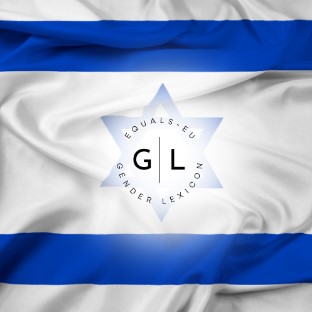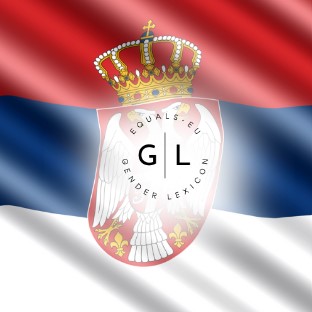
LATVIAN – DZIMUMU LEKSIKONS
In the context of the EQUALS-EU project, we recognize the importance of tailoring our lexicon to the linguistic and cultural nuances of each participating country. To achieve this, our consortium partners have made language-specific contributions to the lexicon, ensuring that the terminology and definitions align seamlessly with the national languages and contextual understandings of the respective regions. Below, we present the Latvian contributions that enrich our lexicon, reflecting the diverse and inclusive approach to data collection for our project.
Diversity – Dažādība, daudzveidība
Burtiskais tulkojums angļu valodā – Diversity: Dažādība, daudzveidībaDažādība
• Dažāds in English – diverse, various.
Daudzveidība
• Daudz in English – lots; veids in English – type.
Comments in English: In Latvian, if translated directly, a choice between
dažādība and daudzveidība is given. The terms can be used interchangeably.
Frāzes piemērs: “Mēs apvienojāmies, lai veidotu veselīgāku politiku un
cienītu dažādību.”(“We came together to create healthier politics and
respect diversity.”)
Equality – Vienlīdzība, līdztiesība
Burtiskais tulkojums angļu valodā – Equality: Vienlīdzība, līdztiesība
Vienlīdzība
• Vienlīdzīgs in English – equal.
Līdztiesība
• līdztiesīgs in English – one with equal rights with others.
Comments in English: Vienlīdzība
• Equal (to something), the same as, also equal to something else.
Līdztiesība
• One who has the same rights as others.
• In Latvian, it is correct to use “līdztiesība” if defining gender equality/equity.
Frāzes piemērs: Visu attiecīgo šo pamatnostādņu aspektu īstenošanā būtu
jāņem vērā dzimumu līdztiesība.” (“Implementation of all relevant
aspects of these guidelines should take into account gender
mainstreaming.”
Gender – Dzimums, sociālais dzimums, dzimte
Burtiskais tulkojums angļu valodā – Dzimums, sociālais dzimums, dzimte:Dzimums
• Dzimums in English – sex/gender Sociālais dzimums
• Sociālais dzimums in English – social gender/sex.
Dzimte
• Dzimte in English – gender.
Comments in English: Even though the term dzimums is a term for both for sex and gender, it is recommended to use the term dzimte for gender.
Dzimums
• Refers to the biological membership of women or men, their biological functions. Historically, a person’s biological sex was determined by external genital differences and a child was raised according to his or her sex. Nowadays, biological sex includes not only external sex differences, but also the hormonal and chromosomal make-up of the body. Even before birth, the chromosomes are already the basis for the different brain development that is seen in adolescence, when the body produces certain hormones that lead to secondary sex characteristics in adolescents. Despite the biological differences at all levels, there are many more similarities than differences between the male and female body.
Sociālais dzimums, dzimte
• A set of specific culturally influenced characteristics that determine the social behaviour of women and men. This concept describes the socially constructed relations between men and women. Social gender is the result of socialisation: through social processes, an individual acquires social experience through action and contact with others, the individual learns certain norms and values that enable him or her to function as a member of society
Frāzes piemērs: Dzimte ir krāsains spektrs, nevis melnbalta pasaule.
“( “Gender is a colourful spectrum, not a black and white world.”)
Gender equity – Dzimumu taisnīgums
Burtiskais tulkojums angļu valodā – : Dzimumu taisnīgums is in English –
gender/sex equity/fairness.
Comments in English: Provision of fairness and justice in the distribution
of benefits and responsibilities between women and men. The term is not widely
used in Latvian.
Frāzes piemērs: “Ja dzimumu līdztiesība ir mērķis, tad dzimumu taisnīgums ir
veids (kā mērķi sasniegt).” (“If gender equality is the end, gender equity
is the means.”)
Inclusion – Iekļautība
Burtiskais tulkojums angļu valodā – Inclusion: Iekļaut in English – to include.
Comments in English: Iekļautība is rarely used in the Latvian language.
The adjective iekļaujošs/iekļaujoša (inclusive) is used more often with
a noun, e.g.:
• iekļaujoša izglītība – inclusive education
• iekļaujošs dizains – inclusive design
Frāzes piemērs: ” Iekļaujoša izglītība ir nepārtraukts izglītības sistēmas
pārveides process.” (“Inclusive education is a continuous process of
transforming the education system.”)
Mainstream – Integrēšana
Burtiskais tulkojums angļu valodā – Mainstreaming: Integrēt in English –
integrate
Comments in English: The term gender mainstreaming in Latvian is integrēta
pieeja dzimumu līdztiesības nodrošināšanai (integrated approach to gender
equality.”)
Frāzes piemērs: Latvija ir pieņēmusi politisku nostāju sekmēt dzimumu
līdztiesību, izmantojot integrēto pieeju dzimumu līdztiesībai.”
(“Latvia has adopted a policy position to promote gender equality through a
gender mainstreaming approach.”).
Marginalisation – Marginalizācija
Burtiskais tulkojums angļu valodā – : Marginalizācija in English – marginalisation
Comments in English: By definition, it is the relegation to the social, political
periphery; made irrelevant. It also defines the loss of previous social ties
and incomplete acquisition of cultural and ethical values of new social
environment.
Frāzes piemērs: “Šīs lauku teritorijas apdraud marginalizācija, jo
lauksaimniecība iznīkst un notiek pastāvīga strādnieku aizplūšana.”
(“These rural areas are threatened by marginalisation, as agriculture is
decimated and there is a constant outflow of workers.”
Sex – Dzimums, bioloģiskais dzimums
Burtiskais tulkojums angļu valodā – Sex :
Dzimums
• Dzimums in Latvian – sex/gender
Bioloģiskais dzimums
• Bioloģiskais dzimums in Latvian – biological sex
Comments in English: Dzimums
Refers to the biological membership of women or men, their biological functions.
Historically, a person’s biological sex was determined by external genital
differences and a child was raised according to his or her sex. Nowadays,
biological sex includes not only external sex differences, but also the
hormonal and chromosomal make-up of the body. Even before birth, the chromosomes
are already the basis for the different brain development that is seen in
adolescence, when the body produces certain hormones that lead to secondary
sex characteristics in adolescents. Despite the biological differences at all
levels, there are many more similarities than differences between the male and
female body.
Frāzes piemērs: “Daži cilvēki izjūt neatbilstību starp savu dzimuma identitāti
un bioloģisko dzimumu.” (“Some people experience a mismatch between their
gender identity and their biological sex.”)
Sustainability – Ilgtspēja
Burtiskais tulkojums angļu valodā – sustainablility : Ilgtspēja in English
Comments in English: Sustainability is the ability to create the conditions
for sustained, balanced self-development.
Frāzes piemērs: “Mūsu Ilgtspējas stratēģija aptver un vērtē visus ilgtspējas
aspektus.” (“Our Sustainability Strategy covers and evaluates all aspects of
sustainability.”)
DISCLAIMER
We are aware of the global, legislative, and academic definitions that exist for gender terminologies and the consortium drew from these definitions in tailoring the research tools to their contexts. The EQUALS-EU lexicon does not purport to redefine or displace the existing definitions, our intention is to share through our lexicon the approaches adopted per country when collecting the data for the project. We hope this may inspire and perhaps be a useful tool for those wishing to support and work with more gender-inclusive innovation processes.














